A simple guide on how to feed and maintain a sourdough starter. Whether you are baking everyday or once a week, this guide will give you tips tricks and information on how to keep your starter alive.
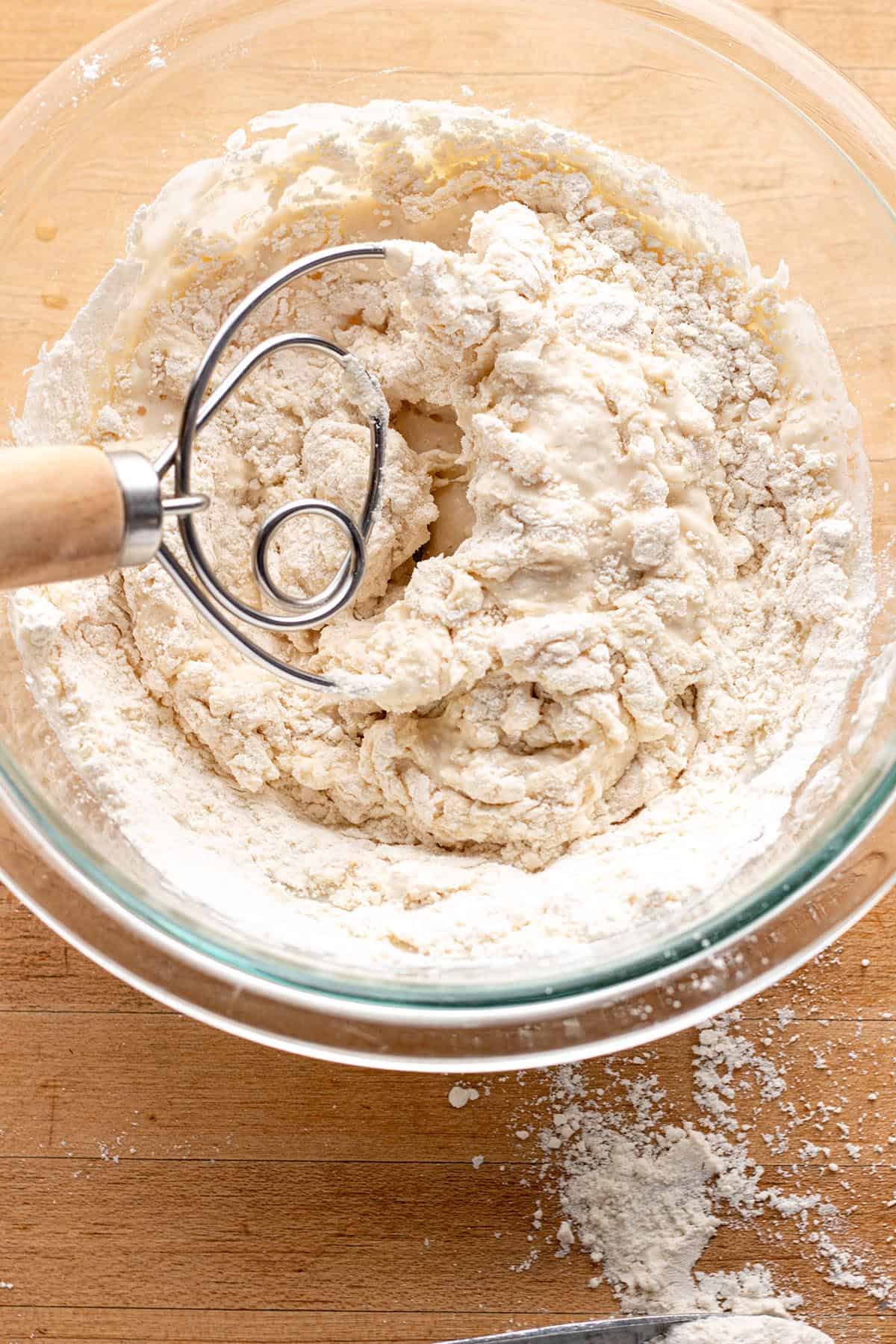
We put so much work, time and energy into getting our starters alive, active and happy. So proper maintenance is crucial to make sure your starter lasts a life time.
This guide is designed to answer all your questions on how to properly feed, store and care for your sourdough starter.
If there is a question I haven't covered, please leave it in the comments section below and I'll be sure to get it answered for you!
If you do not have an active sourdough starter, learn how to make your own sourdough starter and get a list of essential sourdough tools and equipment.
Do you already have one but are having a hard time getting it active? Read my how to troubleshoot a starter.
Jump to:
How Often Do you Feed a Sourdough Starter
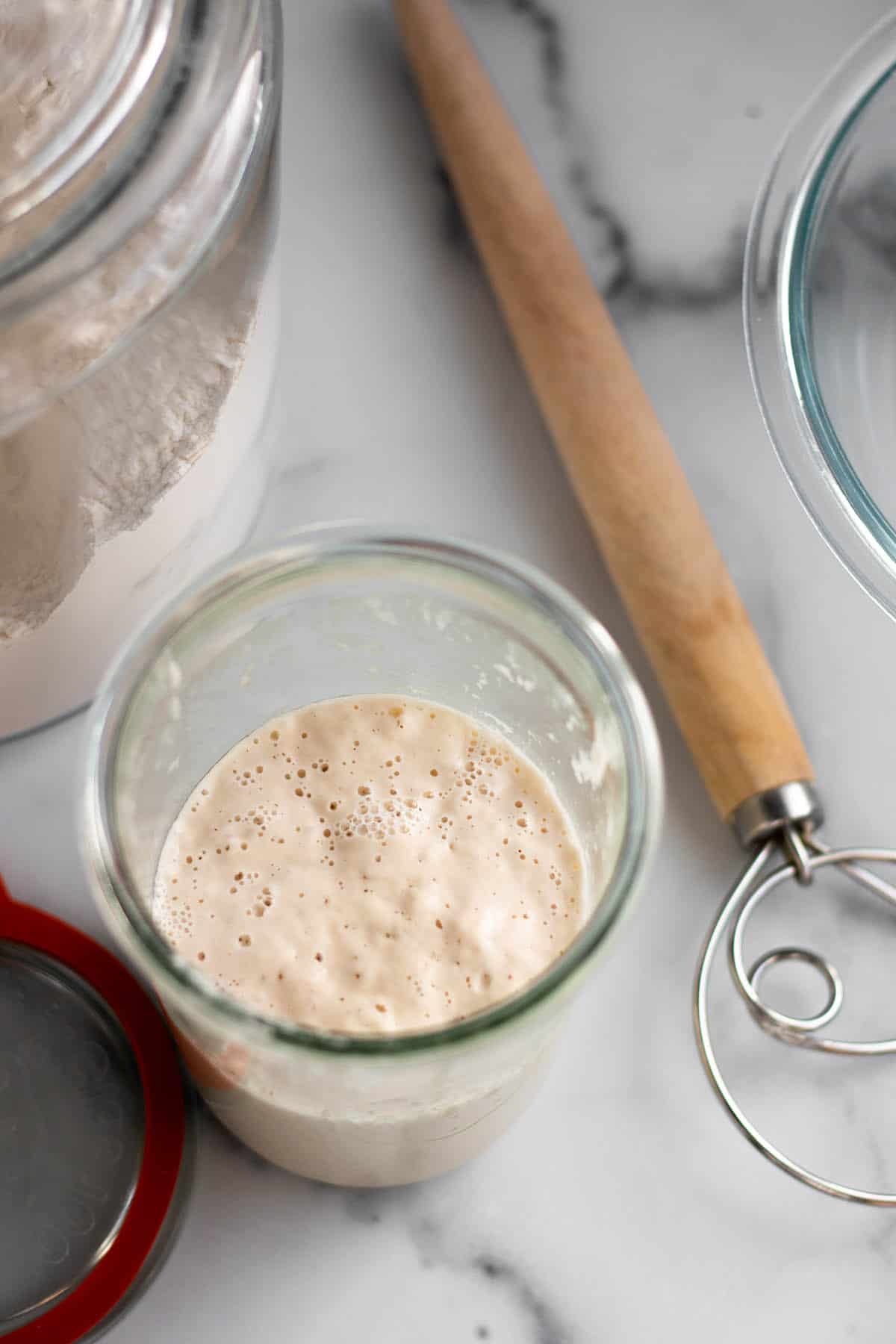
This answer will depend on how much you are baking. I bake all the time so my starter lives on the counter and gets fed almost daily.
When starters need to be fed:
- 6-8 hours before you want to use it to make sourdough bread.
- Any time it starts to develop hooch or a crusty on top. These are signs that it is hungry
- Starts to smell
- When it is on the counter try to feed at least every 24-48 hours.If left out too long without feedings mold and bacteria can start to grow. This is what kills a starter.
If you do not have plans to use it for a few days storing it in the refrigerator will put all growth on pause and keep it safe. More on this below.
How to Feed a Sourdough Starter
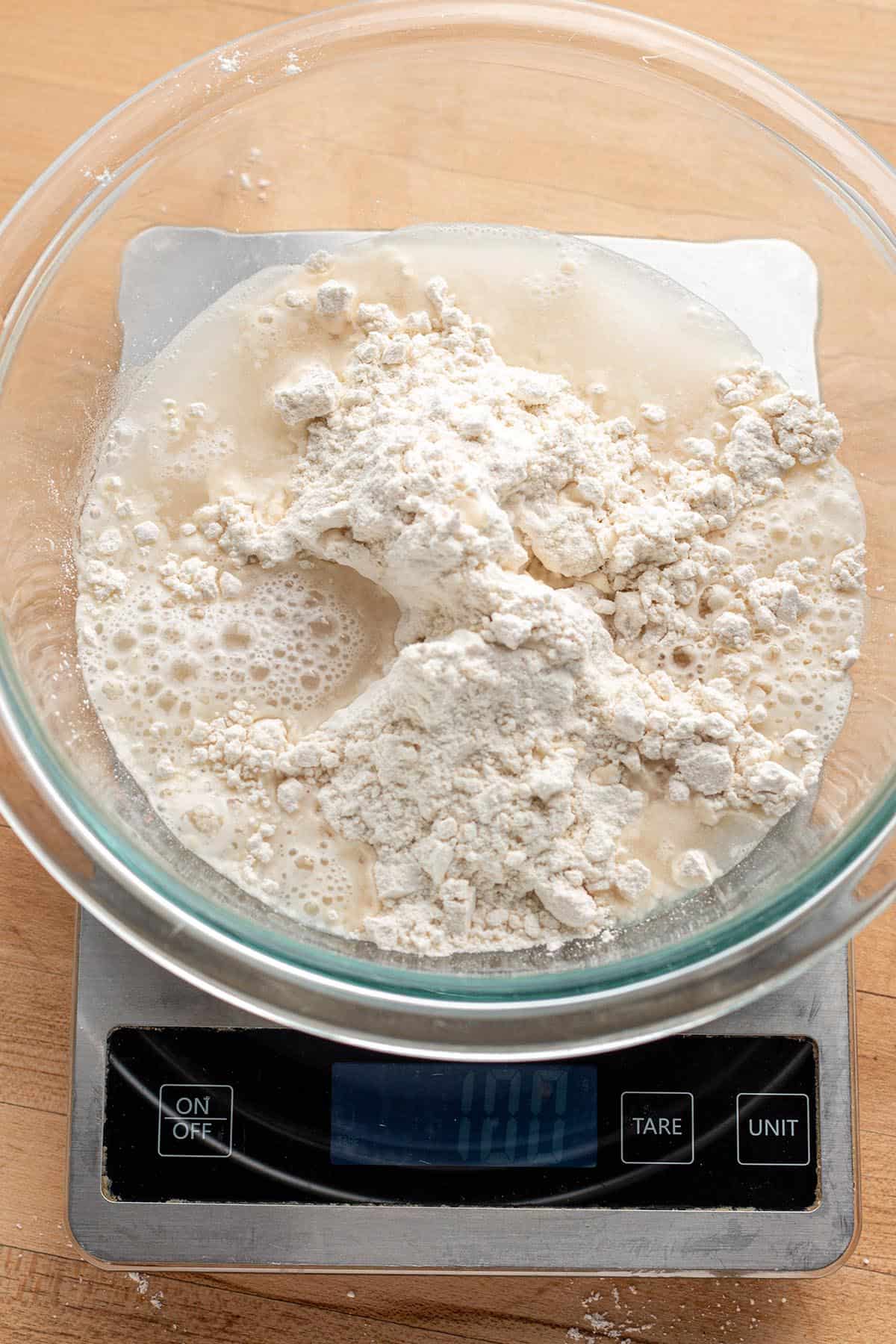
Feeding a sourdough starter is a really simple process.
The best way to feed it is by doing equal parts (in grams) of starter, flour and water.
That means, if you have 50 grams of starter then feed 50 grams of water and 50 grams of flour. Stir it up and lightly cover to let it rise.
This is a good way to maintain a healthy starter and typically how I feed it on a daily basis. When ready to bake take what you need, and then re-feed what is left behind. In 6-8 hours you will be ready to bake with it again.
How much you feed can also depend on the recipe itself.
Sometimes the recipe will call for a stiff starter which will need to be fed a 1:2:2 ratio.
Or it will call for you to create a leaven.
What is a leaven? This is what helps dough rise. Often recipes will have you take out a part of your starter, feed it the recommended amount of water and flour, and then you will use that in the final recipe.
After a while you will start to get into a routine and rhythm with what works best for your baking schedule.
How to Store a Sourdough Starter
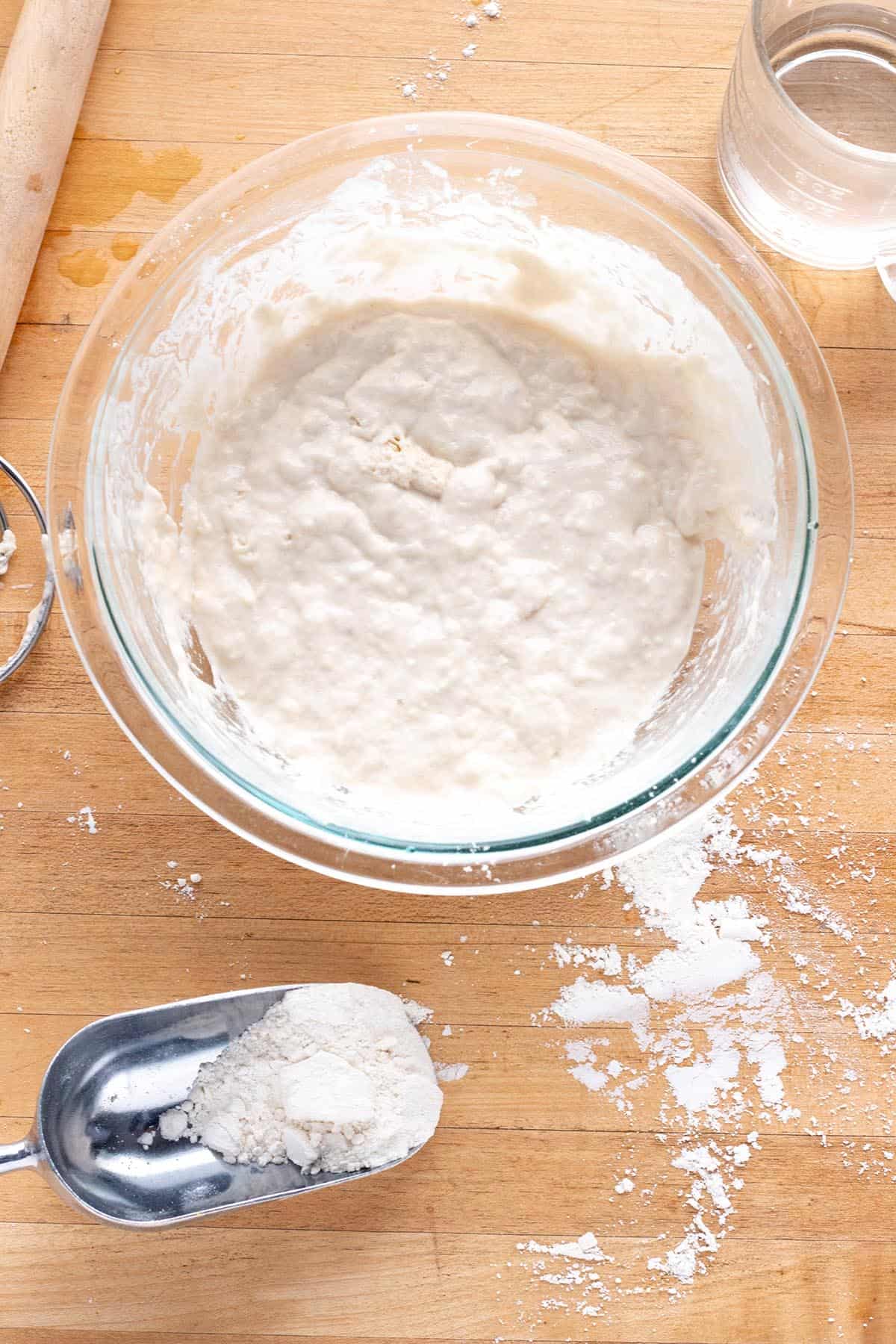
A sourdough starter should be kept in either a glass jar or bowl. Whichever you find easier and works best with your space.
Personally, I only use a glass bowl. I find it much easier to use, mix and care for in a bowl.
Find what you prefer and works best for you.
Whatever you keep it in, make sure it's covered with a light cloth tea towel. When it is out on the counter you never want to use a tight lid.
The pressure that gets built up while a starter is rising can shatter the jar. It also doesn't allow for the wild yeast in our environments to get into the starter. This is crucial to help it grow.
How to Store in the Refrigerator
If you are not wanting to bake for a while, the best way to store your starter is to keep it in an airtight container in the refrigerator.
This will put the yeast development and growth on pause and can be kept this way for a few weeks.
If kept too long in the fridge, it will start to form a dark liquid on top. This is called hooch and perfectly normal. Learn more about hooch and what to do.
To bring it back to life, first warm up to room temp and then feed as normal.
Sometimes it can take a couple of feedings to get it active again. Especially if it's a brand new starter or been in the refrigerator a while.
Sourdough Starter Tools
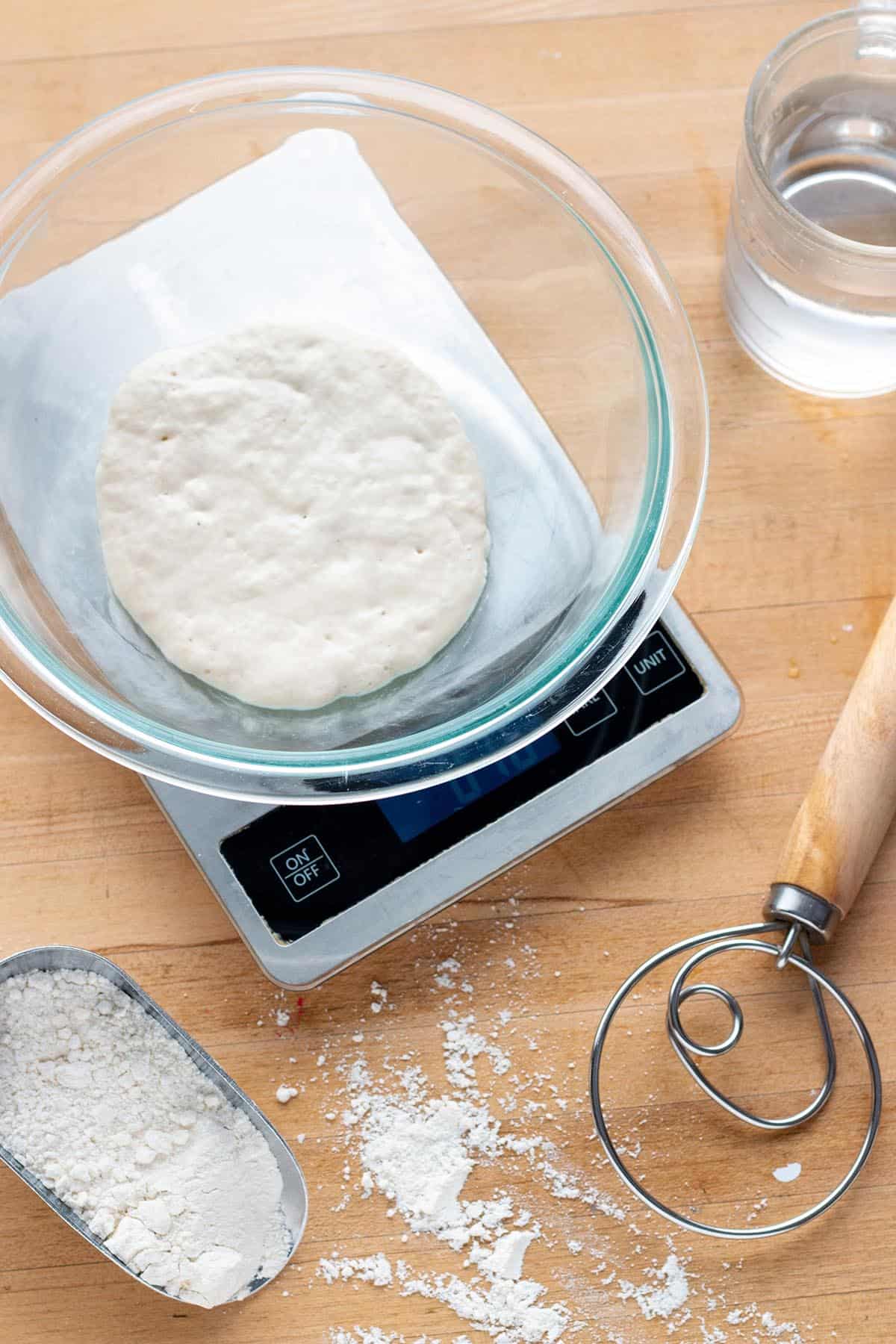
Digital Scale. A digital scale is the most important tool. Measuring a starter in grams is the most accurate way to feed your starter.
2 glass bowls or jars: Having two jars or bowls is a great way to transfer and keep your starter. That way you always have a clean bowl to keep it in.
Danish Dough whisk. Not necessary but definitely makes it easier! The only way I mix my starter now as it makes it so simple.
Flour sack towel or tea towel: you want a towel to cover the bowl. It needs to be light enough to let in the things we want, but heavy enough to keep out the things we don't.
Frequently Asked Questions
If your question hasn't been answered, leave it in the comments below and Ill be sure sure to answer it.
If it is a brand new starter, this is normal. Until the starter is mature it will be very inconsistent in its growth. Read more on how to troubleshoot a starter if you are not getting consistent growth.
This is also a sign that the starter is hungry. Just scrape the crust off into the garbage and feed.
That liquid is called hooch and is perfectly normal. It just means the starter is hungry and needs to be fed. Learn more about hooch.
Some people like to stir it back in and claim it makes the bread even more "sour."
When a starter is hungry it will start to get a fruity or sour smell to it and that is perfectly normal.
A starter can smell yeasty, sour or fruity but it should never be rancid. If it starts to smell like alcohol or nail polish that just means you are not feeding it enough.
If that smell is accompanied with a pink or orange tint, throw it out immediately and start over as your starter began to grow bacteria.
The best way to tell if a starter is ready to make bread with is if it doubles in size within 6-8 hours. It should be actively bubbly and a very light consistency. Learn more about how to tell your starter is ready.
Instead of tossing your extra starter add it to discard recipes. There are so many things you can do with that extra sourdough starter.
My other tips is to keep a smaller amount of starter. Instead of feeding 100g of each flour and water, only keep around 25-30 grams of starter. This will significantly cut down the amount of waste.
Then, when you're ready to bake bread, up the feedings until you have the amount you need.
That is perfectly fine! Especially if you follow the 1:1:1 ratio feeding. Just weigh how much you have and add that much flour and water.
Then, 8 hours later feed again without discarding. Before you know it, you will be swimming in starter.
Please leave any of your questions in the comments section and I would be happy to answer them!
Sourdough Discard Recipe:
You must use the category name, not a URL, in the category field.Sourdough Resources:


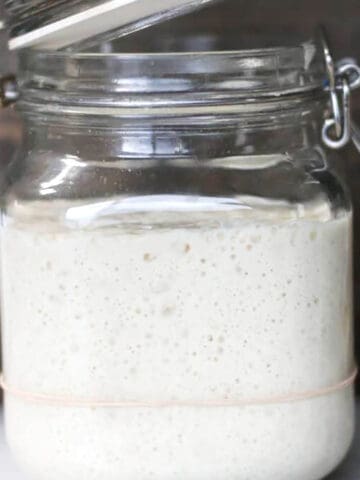
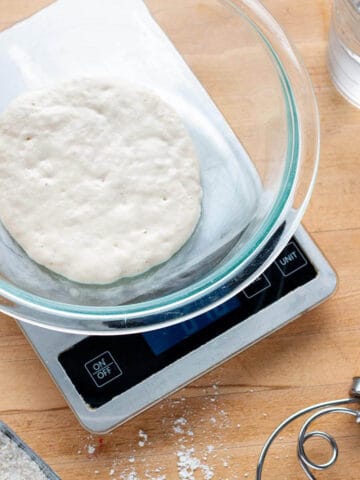
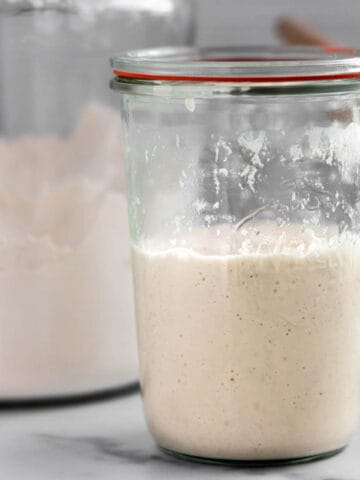
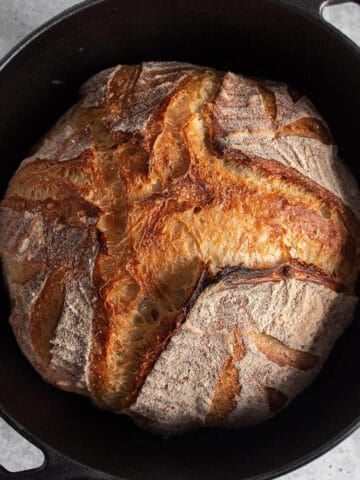

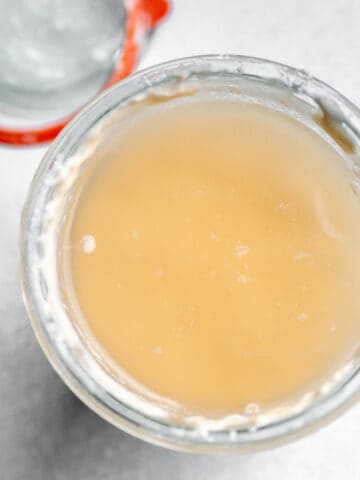
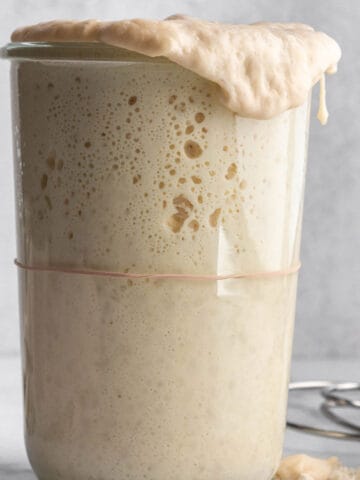
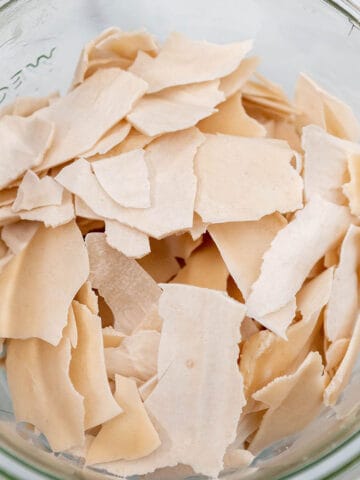
So...still figuring out feeding/not feeding/discard - i never discarded and killed my starter - received some starter from a friend (who introduced me to Dirt & Dough).
She said to feed in a week and rambled off instructions that I can't remember, and not wanting to leave in fridge for too long ( remembering she said to feed in a week...) I just pulled from fridge and fed in 10 days: forgot how much starter I had (now I think it must've been 100g because she said she feeds 100g/100g);
I know I don't have time to do sourdough at least for next few days,so I figured I could feed it less this time to keep it alive: I added 50g flour, then water but it went to 53g so I added a few more of flour... then was reading on here (around 10pm) to see how you do starter feedings and saw the 1:1:1....and fell asleep with starter on counter with lid on not tight - woke up at 4am to fairly active movement and thought oh no - what do i do?? I stuck it in fridge. No marker either.....
Death of starter impending? It is my daughter's birthday tomorrow and I have very little time to think, much less stretch and fold (I MIGHT be able to do a discard, but remember, I don't think I fed enough and was sleeping on the job and I want to KICK myself b/c I may have tried to correct and can't remember what I did - if I added more to make the 100/100 - but I know whatever I did, it was over by 3g).
Can I leave whole starter in fridge? do I need to remove half and feed again? can I dehydrate any now so I don't have to ask her for another starter starter? Our home is only around 70 degrees, tops at this time of year overnight. I need help with HOW to properly "discard" and WHEN - because I used to not ever discard (that's relative to my lack of baking sourdough from my old starter but probably how I killed it). I bake weekly from a whole red winter wheat starter that I don't need to discard - I feed that one weekly if not more frequently and it is super forgiving - can be done by the tablespoon to keep active and small. or by the cup to make enough to bake - I usually use 2 cups of starter and it is ALWAYS refrigerated so no guessing when to counter it for how long before I think I migh have hours to stretch and fold between dance classes and 2 hour waterpolo practices...
I did learn how to make it SOUR and we LOVE and APPRECIATE what this type of bread does for our digestion! I have much appreciation for your site - my friend thinks she is so novice - I think she's being quite humble b/c her bread is OUT OF THIS WORLD AMAZING - and that is an understatement coming from an SF EXTRA SOUR sourdough native! She even made a mistake and corrected and the crumb came out less airholes but it was PERFECT (I like to eat bread not holes). And they are beautiful as well! I finally got it out of her that she did her starter and baking following your site instructions. So here I am and will stay! I just need extra instructions on corrections and discard technique - maybe I need to transfer to a bowl to measure how much I have.
Hi Sandy! Thank yo for taking the time to read through my material and commenting. So one thing i want to advise is sourodugh should be a faijlrly simple process and you may be overthinking/worrying a bit. Here are some answers to your questions. Forgive me if i miss a few.
1. It can go in the fridge at any time. Inactive/active/unfed/fed it really is fine. And it can live a week or even longer. Just as long as it doesn't grow mold or develop pink/orange tinge to it its just fine. Just take out whenever your ready and feed.
2. If you are over a few grams on the flour/water combo it will be okay.
3. You don't need to discard at all. If you are keeping small amounts of starter you should never have to discard. The term discard comes from when we are making a new starter and we have to remove half (or discard) to feed or else it will just grow out of control. once your starter is established there will never be a reason to discard other than you have too much.
Please feel free to shoot me a message if you have any other questions. Thank you so much for your kind words and happy to help how I can!
I am new and very confused about the starter & discard. I just cut/pasted the sentence above and need clarification: "If you are only baking a couple of times a week, the starter really only needs to be fed right before you bake." I thought the starter had to ferment prior to baking.
Also, if a starter has been fed & hours later, there are bubbles & it's doubled, that is the active state. Once it goes back down, is it no longer active? Is it considered a discard? You have a great website. Thank you.
Hi Donna! These are all great questions. Starters can be a bit confusing and I think I need to work on that sentence. Yes the starter does need time to ferment before adding it to bread recipes. I think your second paragraph sums it up perfectly. Discard is just inactive starter. If it rises and then falls back down it is now considered discard, or inactive. Once it is fed again and rises it is now active to use in bread. When baking with the discard (inactive starter) it will often need baking soda, powder or instant yeast to help it out. When it is active it will no longer need another leavening agent. I hope this helps clarify things. Please ask any other questions you may have.
Just wanted to say thank you for your post. My wife tried to make a starter a while back that didn’t work. So I found you post one day and decided to try it out. So far my starter is doing amazingly. I have made a lot of pancakes and the chickens have had their fill. I have not tried bread yet but will do so shortly. Thank you again.
I am so happy to hear that William! And so happy you gave your starter another go. I cannot wait to hear about your first loaf, please reach out if you have any questions. My chickens get their fill as well. I have one that will fight the others for it.
Hi Kristen, when you feed the starter, you just add water & flour correct? I want to make sure I am doing 8t correctly. I saw on your post 1:1:1...just making sure there isn't anything else I should add. Thank you so much for your help!
Hi Dusty! Yes just flour and water. The 3rd 1 will be once you have your starter going. So after the first feed the 1:1:1 will be Starter:flour:water. Let me know if you have any additional questions. Thank you!